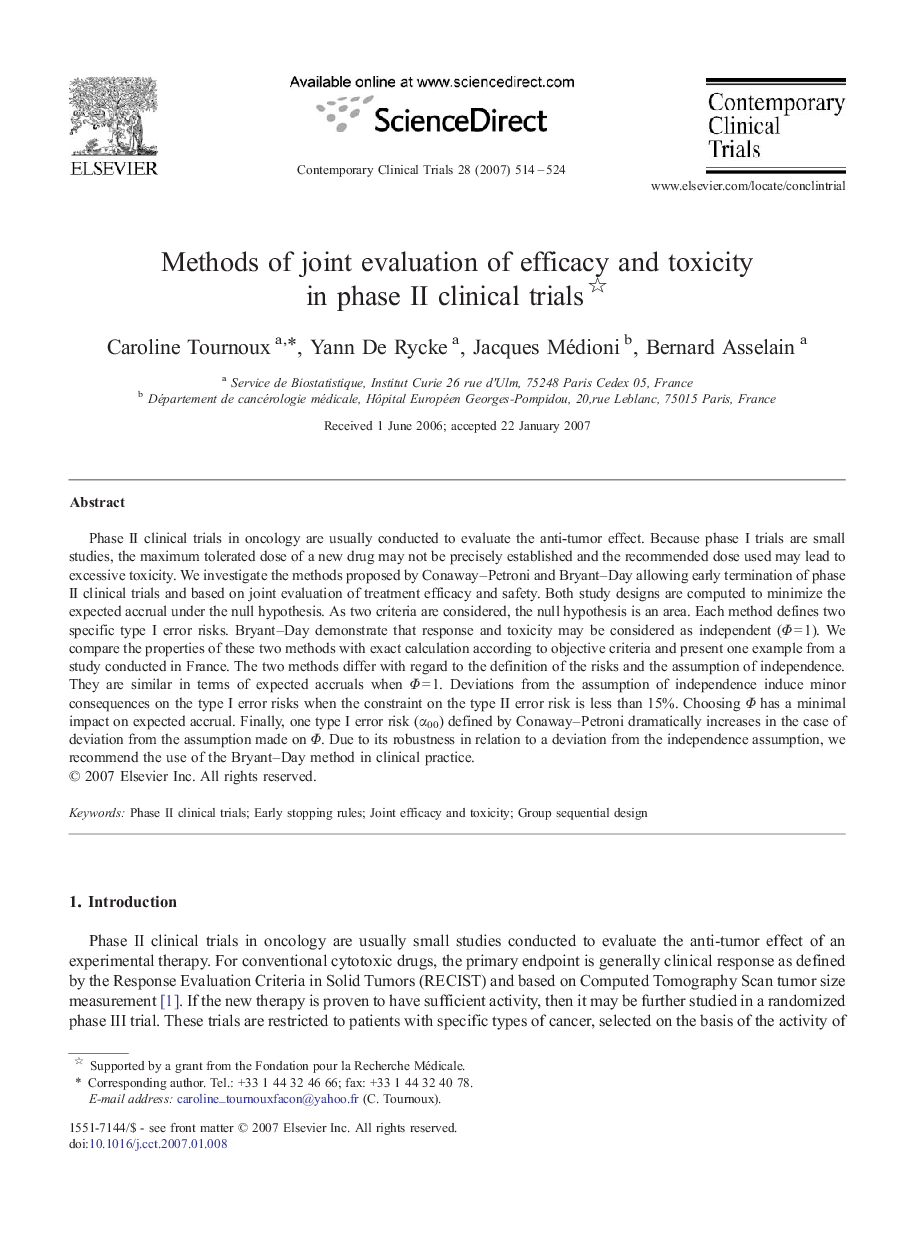| Article ID | Journal | Published Year | Pages | File Type |
|---|---|---|---|---|
| 3463484 | Contemporary Clinical Trials | 2007 | 11 Pages |
Phase II clinical trials in oncology are usually conducted to evaluate the anti-tumor effect. Because phase I trials are small studies, the maximum tolerated dose of a new drug may not be precisely established and the recommended dose used may lead to excessive toxicity. We investigate the methods proposed by Conaway–Petroni and Bryant–Day allowing early termination of phase II clinical trials and based on joint evaluation of treatment efficacy and safety. Both study designs are computed to minimize the expected accrual under the null hypothesis. As two criteria are considered, the null hypothesis is an area. Each method defines two specific type I error risks. Bryant–Day demonstrate that response and toxicity may be considered as independent (Φ = 1). We compare the properties of these two methods with exact calculation according to objective criteria and present one example from a study conducted in France. The two methods differ with regard to the definition of the risks and the assumption of independence. They are similar in terms of expected accruals when Φ = 1. Deviations from the assumption of independence induce minor consequences on the type I error risks when the constraint on the type II error risk is less than 15%. Choosing Φ has a minimal impact on expected accrual. Finally, one type I error risk (α00) defined by Conaway–Petroni dramatically increases in the case of deviation from the assumption made on Φ. Due to its robustness in relation to a deviation from the independence assumption, we recommend the use of the Bryant–Day method in clinical practice.
